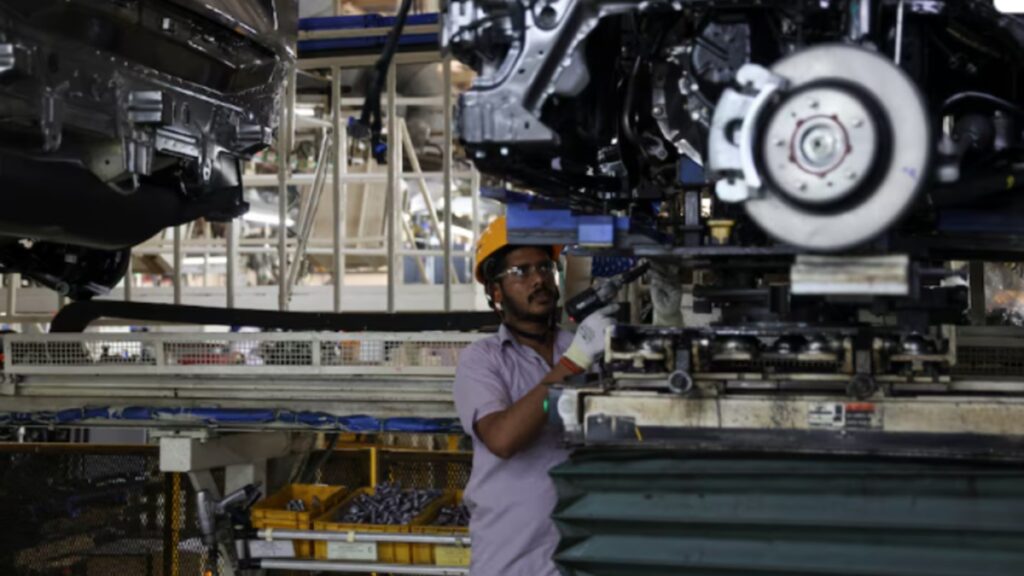NEW DELHI: For the manufacturing sector to grow at a rate faster than the broader economy, and raise its share in the gross domestic product (GDP), a fresh set of policies would be required, in addition to the ones that are tried like production-linked incentives, industry executives and experts said. Rather than elevated tariffs, several sectors may be in need for cheaper imports of raw materials, critical equipment and intermediate goods for enhanced domestic value addition, they argue.
The opportunity provided by the tariff war and the demand from the US for tariff cuts could be seized to lower the customs duties on a broad range of products. Besides, on an MFN (most favoured nation) basis, tariffs could be lowered for all countries for a number of tariff lines.
Recent years have seen stagnant growth, if not decline, in the share of manufacturing in GDP. The current situation is not any better either. The growth of manufacturing output, which has a 77% weight on the Index of Industrial Production (IIP), almost halved to 2.9% in February this year compared to 4.9% in the year-ago period.
“India’s challenge in manufacturing is not (constraints) of demand, finance, or skills but regulatory cholesterol. People hold China’s joining the World Trade Orgamisation (WTO) in 2001 as the turning point in their becoming the factory for the world. India had joined the WTO six years before, yet we missed that opportunity,” said Manish Sabhrawal, Vice Chairman, TeamLease Services.
The country, analysts say, have the next twenty years to turn “Make-in-India” campaign successful, as domestic consumption gets to a critical mass. To take advantage of China-Plus strategy, we need a massive reduction in our compliance requirements, Sabhrawal added.
Anil Kumar Choudhury, former CMD at SAIL, said, “We need to strengthen our ecosystem consisting of manufacturing infrastructure and skill development, and reduce compliance burdens. Investment in R&D, access to affordable finance, support for meeting global competition etc. re vital too.” Sector-specific SEZS will help boost manufacturing for exports, he noted.
Pankaj Chadha, Chairman, Engineering Exports Promotion Council (EEPC), said while there was a need to reduce the “regulatory cholesterol” around the manufacturing sector, the cost of capital is prohibitive for the sector, particularly for small and medium-scale industries, to invest in new-age plant and machinery.
Besides labour laws, which differ from state to state, local-level resistance is also significant. Chadha said the cost of capital is so high that R&D for SMEs is almost impossible.
Problems in land acquisition (Tata Nano in West Bengal, Posco in Odisha), court directions (Sterlite Copper in Tamil Nadu), and environmentalist protests (Goa airport) have also halted the progress of manufacturing, among other things.
While the next wave of manufacturing growth would be mineral-led and in areas that promote sustainability, India has turned India into a net importer of copper, , crucial for the renewable energy and electric vehicles industries.
The Modi government has set a target of taking this to 25% of the GDP by 2030. The production-linked incentive (PLI) scheme under the government’s “Make in India” initiative, launched in 2014, is showing some results , with India becoming the second-largest mobile phone manufacturer in the world. But the success of the scheme is limited to certain sectors.
The semiconductor ecosystem has gained sufficient momentum, with five projects committing Rs 1.5 lakh crore investment.
The manufacturing sector’s role is immensely important for India’s development and for the country to become a developed nation. Arunkumar Pillai, Director General of NAMTECH, said “To become a developed nation by 2047, we must grow our GDP six times, i.e., from the current $3 trillion to $18 to $20 trillion; increase our per capita income from $3,000 to $12,000 and create jobs for 60 crore Indians. We must also ensure this growth is sustainable and meets our aspiration to achieve net zero by 2070.”
Pillai said India’s youth population and its strength in IT can be leveraged to welcome foreign firms looking beyond China to set up shops. “India is a global leader in software services. The time is ripe to integrate the IT and manufacturing sectors, leading in creating the next level of smart, sustainable manufacturing that serves both domestic and global markets,” Pillai said.
There are silver linings. A recent McKinsey study projected that $4 to $5 trillion worth of trade flows would shift due to geopolitical trends by 2030. India has the potential to capture $1 trillion of these trade flows, thereby boosting its share of global trade in key value chains.
The Institute for Studies in Industrial Development’s India Industrial Development Report 2024-25 forecasts that, with the right policies in place, India’s manufacturing sector could more than double its value-added output from $717 billion in 2024 to $1.45 trillion by 2030.
Source: The Financial Express

 US Solar Tariffs On Four South East Asian Countries May Help India Boost Exports
US Solar Tariffs On Four South East Asian Countries May Help India Boost Exports 